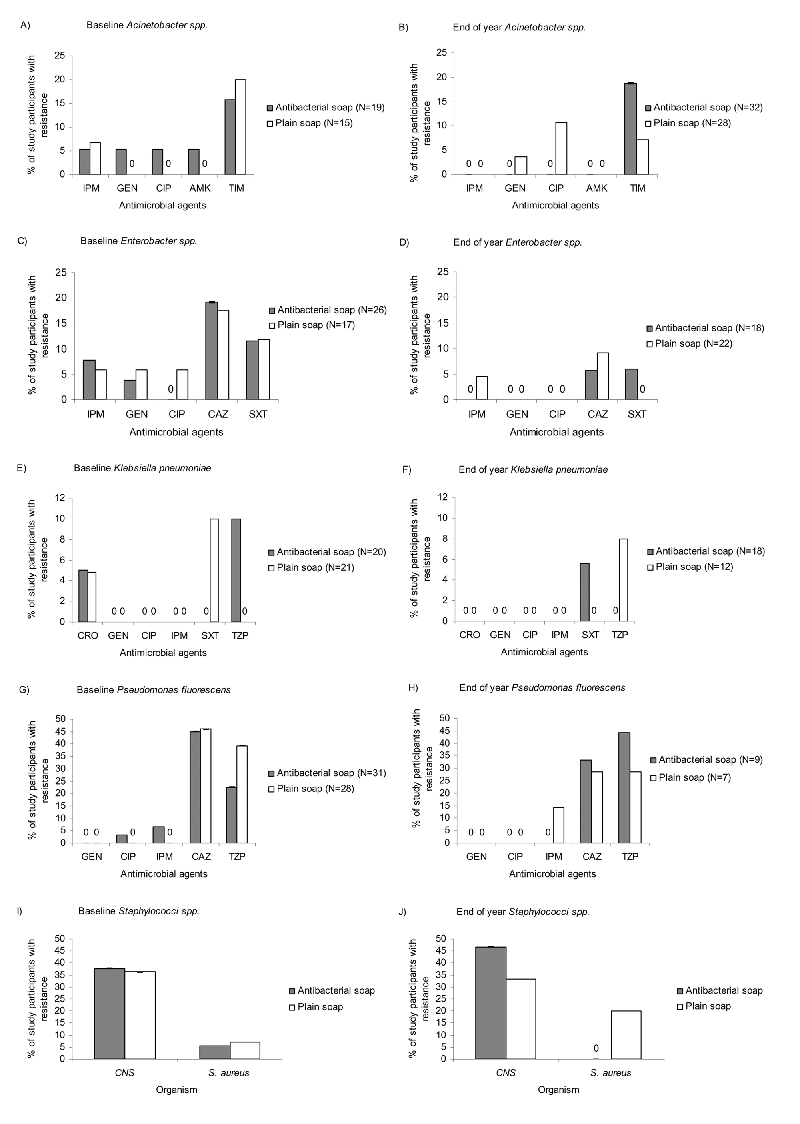 |
| |
||
| |
|||||||||||||||||
|
|||||||||||||||||
|
|||||||||||||||||
| EID
Home | Ahead of Print | Past
Issues | EID Search | Contact
Us | Announcements | Suggested
Citation | Submit Manuscript
Volume 11, Number 10, October 2005 Antibacterial Cleaning Products and Drug ResistanceAllison E. Aiello,* Bonnie Marshall,† Stuart B. Levy,† Phyllis Della-Latta,‡
Susan X. Lin,‡ and Elaine Larson‡ |
||
|
|
 |
|
| Back to article | |
|
Appendix Figure. Proportion of study participants with gram-negative bacteria resistant to antimicrobial agents, methicillin-resistant Staphylococcus aureus (MRSA), and methicillin-resistant, coagulase-negative staphylococci (MRCNS). For A and B, Acinetobacter baumanii and A. lwoffi were combined to represent Acinetobacter spp. For C and D, Enterobacter cloacae and E. agglomerans were combined to represent Enterobacter spp. IPM, imipenem; GEN, gentamicin; CIP, ciprofloxacin; AMK, amikacin; CAZ, ceftazidime; TIM, ticarcillin-clavulanic acid; SXT, trimethoprim-sulfamethoxazole; CRO, ceftriaxone; TZP, piperacillin-tazobactam. |
|
|
|
|
|
EID Home | Top of Page | Ahead-of-Print | Past Issues | Suggested Citation | EID Search | Contact Us | Accessibility | Privacy Policy Notice | CDC Home | CDC Search | Health Topics A-Z |
|
|
This page last reviewed August 25, 2005 |
|
|
Emerging
Infectious Diseases Journal |
|